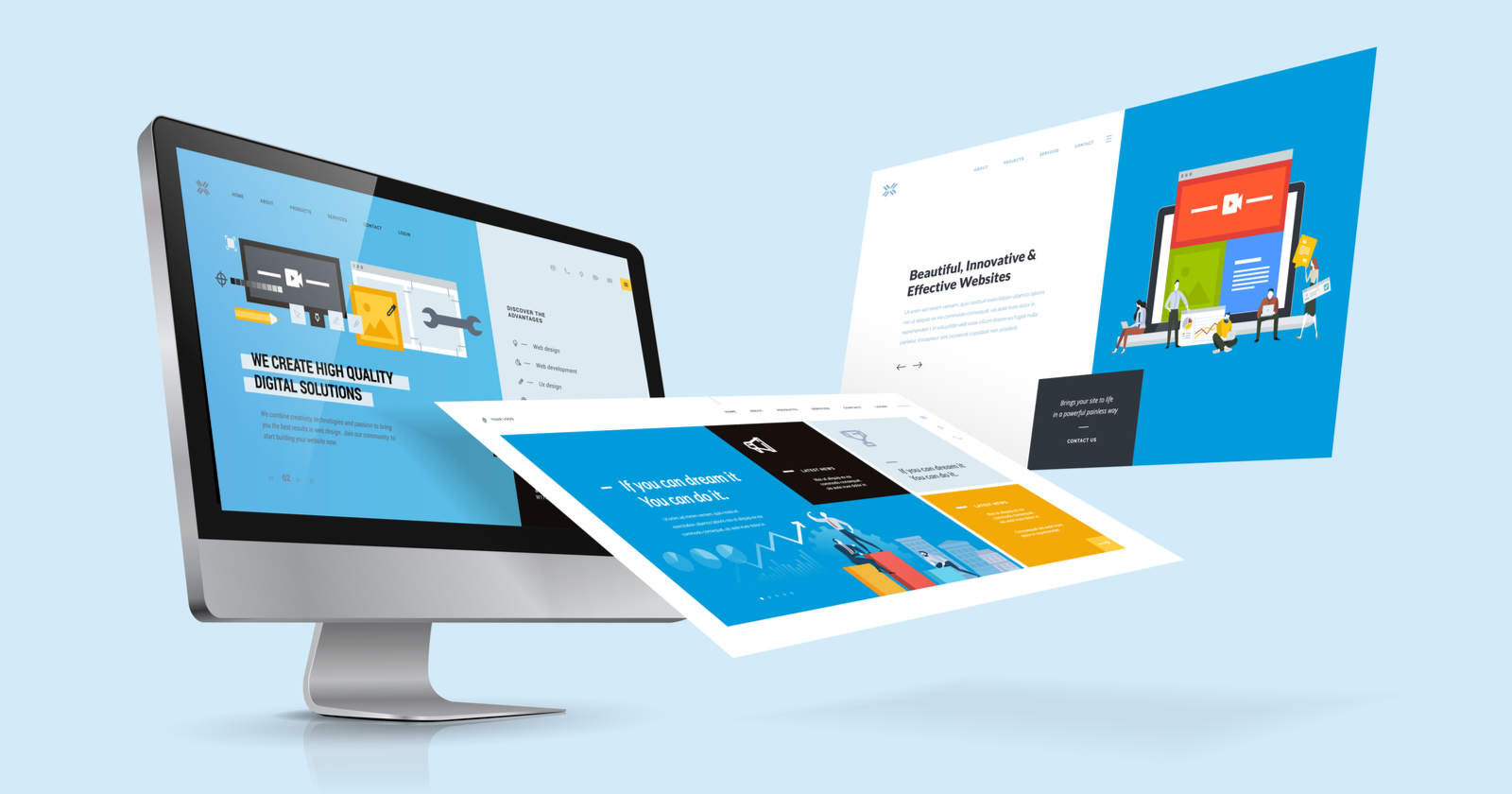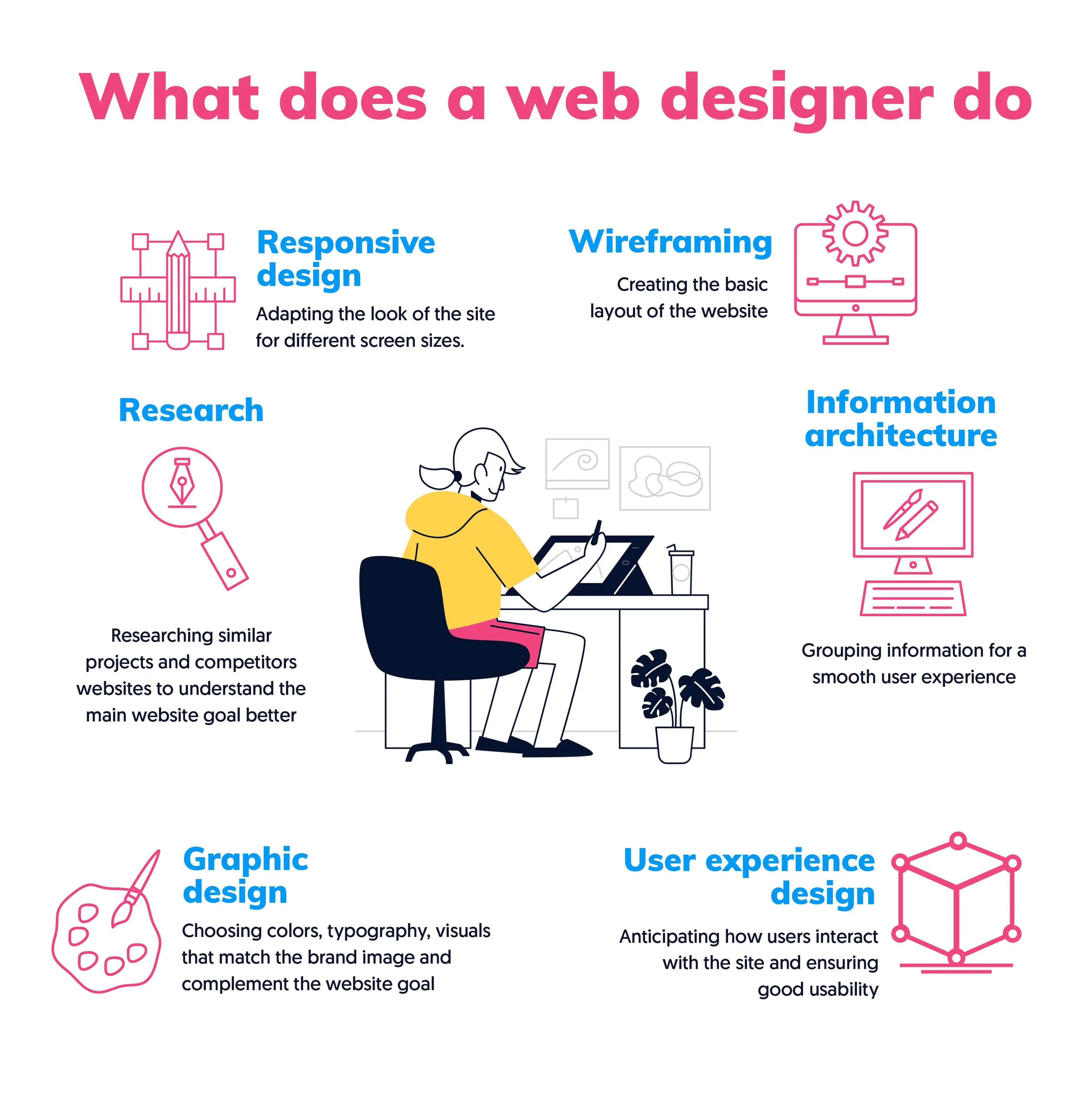Aligned Position Web Design: Professional Web Development to Maximize Your Online Impact
Aligned Position Web Design: Professional Web Development to Maximize Your Online Impact
Blog Article
The Ideal Types of Website Design to Boost User Experience and Involvement
In the ever-evolving landscape of digital communication, the effectiveness of Web layout substantially impacts individual experience and involvement. Different layout methods, such as minimal, receptive, and interactive designs, each deal unique advantages that can provide to diverse individual demands. Understanding which sorts of website design finest offer these objectives can be critical for organizations aiming to enhance client satisfaction and retention. The inquiry continues to be: which design elements genuinely reverberate with customers and foster purposeful engagement? The exploration of these principles exposes important understandings that might redefine your approach to website design.
Minimalist Web Design
As digital landscapes become increasingly cluttered, minimal Web layout has actually become a powerful method to enhancing user experience. This design ideology focuses on simpleness, focusing on vital aspects while eliminating unneeded disturbances. By making use of adequate white area, straightforward navigation, and a minimal shade combination, minimalist layout promotes clearness and directs customer interest to essential content.
The core concept of minimal Web design is to produce a smooth interaction for users. By lowering cognitive tons, users can promptly comprehend information without really feeling overwhelmed. This direct strategy not only boosts functionality however also urges interaction, as visitors are more probable to discover a site that is aesthetically attractive and easy to navigate.
Furthermore, minimal layout typically stresses typography and images, utilizing these elements tactically to share messages effectively. In essence, minimalist Web style is not simply a fad; it is a thoughtful methodology that recognizes the significance of user-centered style.
Receptive Web Layout
In today's varied electronic environment, responsive website design has ended up being crucial for developing a seamless user experience across a plethora of tools. As users access websites on smartphones, tablets, laptops, and desktops, the capability of a web site to adapt its design and material to different display dimensions and resolutions is critical.
Receptive website design employs flexible grids, photos, and CSS media questions to make sure that Web material is presented optimally, despite the tool made use of. This technique not only enhances the aesthetic charm of a web site however also considerably improves use. Individuals are much more likely to involve with a site that offers a regular experience, as it gets rid of the disappointment of having to focus or scroll excessively.
Moreover, search engines, consisting of Google, prioritize mobile-friendly internet sites in search positions. By adopting receptive design, organizations can enhance their visibility and get to a broader target market. This technique additionally simplifies internet site maintenance, as a solitary version of the website can cater to all tools, minimizing the need for several versions. In recap, receptive Web layout is a fundamental technique that enhances individual experience, engagement, and overall contentment.
Interactive Website Design
Receptive Web layout prepares for improving customer experience, but interactive website design takes this an action further by engaging individuals in a much more vibrant way - Aligned Position Web Design. By incorporating aspects such as animations, clickable models, and real-time comments, interactive Web design captivates users, attracting them right into a richer browsing experience
This method not just fosters interaction however additionally urges customers to check out material actively instead of passively consuming it. Techniques such as gamification, where individuals make benefits for completing tasks, can dramatically boost the moment invested in a website and boost total satisfaction. Interactive attributes can streamline complicated info, making it a lot more enjoyable and digestible.

Integrating interactive design aspects can additionally lead to higher conversion prices, as users are more probable to engage with a site that proactively involves them. Aligned Position Web Design. Eventually, interactive Web layout transforms individual experiences right into remarkable journeys, making sure that site visitors return time and again
Flat Style
Defined by its minimalistic strategy, level design emphasizes simplicity and performance, removing away unneeded components and concentrating on important features. This design viewpoint prioritizes functionality, making sure that individuals can browse interfaces effortlessly and effectiveness. By utilizing a clean aesthetic, flat design eliminates the clutter often found in more luxuriant designs, therefore boosting individual concentrate on material and functionality.
The hallmark her comment is here of level layout exists in its use of bold colors, straightforward typography, and geometric forms. These aspects contribute to a visually enticing user interface that is both modern-day and friendly. In addition, level style promotes a sense of quality, enabling individuals to discern essential activities and info without interruption.
Furthermore, level style is particularly reliable in responsive website design, as its simplicity converts well throughout different devices and display sizes. The lack of complex textures and slopes reduces loading times, which is critical for preserving customer interaction. As electronic landscapes remain to evolve, level design continues to be a relevant selection for creating straightforward sites that boost general experience. By concentrating on vital attributes, flat layout not only satisfies customer requirements yet also motivates seamless interaction, making it an essential component of efficient website design approaches.
Flexible Website Design
Flexible website design personalizes the individual experience by developing numerous fixed layouts tailored to different screen dimensions and tools. Unlike receptive layout, which fluidly adjusts a single layout, adaptive design utilizes unique designs for certain breakpoints, ensuring optimal presentation on different systems. This technique permits developers to concentrate on the one-of-a-kind characteristics of each device, enhancing usability by delivering precisely what individuals need based on their context.
One of the primary benefits of flexible website design is its ability to optimize load times and efficiency. By offering customized material and images that fit the user's tool, internet sites can decrease information usage and improve loading rates. This is specifically valuable for customers with slower links or restricted data strategies.

Additionally, flexible layout assists in an extra consistent and regulated branding experience. Since designers why not check here develop multiple designs, they can guarantee that the aesthetic components line up with the brand name's identity across different systems - Aligned Position Web Design. This results in a cohesive individual experience, boosting engagement and promoting individual retention
Verdict
Finally, the combination of minimal, receptive, and interactive website design principles dramatically enhances user experience and interaction. Minimal layout cultivates clarity and focus, while responsive style makes sure flexibility throughout various devices, promoting availability. Interactive layout astounds customers via dynamic elements, encouraging exploration and personalization. Collectively, these design approaches add to the creation of user-friendly environments that not only improve complete satisfaction however likewise drive higher conversion rates, underscoring their crucial significance in contemporary Web layout approaches.

Minimal layout fosters clarity and focus, while responsive style makes sure flexibility throughout numerous tools, promoting accessibility. Collectively, these design approaches contribute to the creation of easy to use atmospheres that not only enhance fulfillment however likewise drive higher conversion rates, highlighting their important value in modern Web style techniques.
Report this page